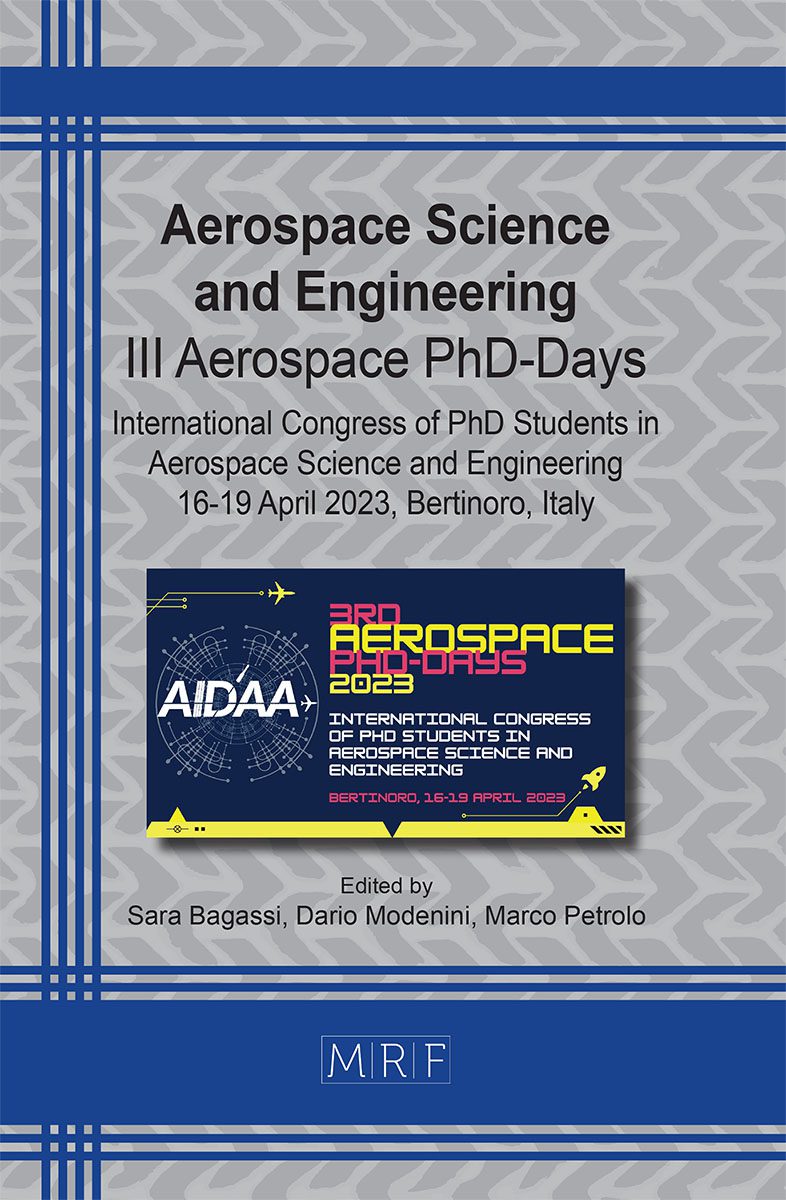Digital technologies and human-machine interaction in air traffic control operations
Marzia Corsi
download PDFAbstract. The aim of this study is to exploit digital technologies to develop and validate an innovative Human Machine Interface for Air Traffic Control Operations tailored based on actual visibility condition, specific phase of flight and different user working positions. The model for the interface prototype exploits multimodal interaction features and implements technologies and functions such as Extended Reality, aircraft identification and tracking labels, and safety net visualization. Moreover, it includes the future possible scenario of the Air Traffic Management comprising the integration of autonomous drones and Urban Air Mobility.
Keywords
Digital Technologies, Air Traffic Control Operations, ATM, UTM
Published online 9/1/2023, 5 pages
Copyright © 2023 by the author(s)
Published under license by Materials Research Forum LLC., Millersville PA, USA
Citation: Marzia Corsi, Digital technologies and human-machine interaction in air traffic control operations, Materials Research Proceedings, Vol. 33, pp 36-40, 2023
DOI: https://doi.org/10.21741/9781644902677-6
The article was published as article 6 of the book Aerospace Science and Engineering
![]() Content from this work may be used under the terms of the Creative Commons Attribution 3.0 license. Any further distribution of this work must maintain attribution to the author(s) and the title of the work, journal citation and DOI.
Content from this work may be used under the terms of the Creative Commons Attribution 3.0 license. Any further distribution of this work must maintain attribution to the author(s) and the title of the work, journal citation and DOI.
References
[1] R. Reisman, D. Brown, Design of augmented reality tools for air traffic control towers, in: 6th AIAA Aviation Technology, Integration and Operations Conference (ATIO), 2006, p. 7713. https://doi.org/10.2514/6.2006-7713
[2] E. Pinska, An investigation of the head-up time at tower and ground control positions, EUROCONTROL Experimental Centre, Bretigny (2006).
[3] E. Pinska, C. Tijus, Augmented reality technology for control tower analysis of applicability based on the field study, in: Proceeding of 1st CEAS European Air and Space Conference, Citeseer, 2007, pp. 573-580.
[4] A. Papenfuss, M. Friedrich, C. Möhlenbrink, M. Rudolph, S. Schier, M. Schmidt, N. Fürstenau, Assessing operational validity of remote tower control in high-fidelity tower simulation, IFAC Proceedings Volumes 43 (2010) 117-122. https://doi.org/10.3182/20100831-4-FR-2021.00022
[5] B. Hilburn, Head-down time in aerodrome operations: A scope study, Center for Human Performance Research (2004).
[6] Daniel J Weintraub. Human factors issues in head-up display design: The book of HUD,volume 92. CSERIAC, 1992.
[7] R. J. Reisman, D. M. Brown, Augmented Reality Tower Technology Assessment, Technical Report, 2009.
[8] R. J. Reisman, S. K. Feiner, D. M. Brown, Augmented reality tower technology flight test, in: Proceedings of the International Conference on Human-Computer Interaction in Aerospace, 2014, pp. 1-8. https://doi.org/10.1145/2669592.2669651
[9] M. Hagl, M. Friedrich, A. Papenfuss, N. Scherer-Negenborn, J. Jakobi, T. Rambau, M. Schmidt, Augmented reality in a remote tower environment based on vs/ir fusion and optical tracking, in: International Conference on Engineering Psychology and Cognitive Ergonomics,Springer, 2018, pp. 558-571. https://doi.org/10.1007/978-3-319-91122-9_45
[10] Resilient synthetic vision for advanced control tower air navigation service provision, 2018. URL: https://www.retina-atm.eu/index.html.
[11] S. Bagassi, F. De Crescenzio, F. Lucchi, N. Masotti, Augmented and virtual reality in the airport control tower (2016).
[12] N. Masotti, S. Bagassi, F. D. Crescenzio, Augmented reality for the control tower: The retina concept, in: International Conference on Augmented Reality, Virtual Reality and Computer Graphics, Springer, 2016, pp. 444-452. https://doi.org/10.1007/978-3-319-40621-3_32
[13] S. Bagassi, F. De Crescenzio, S. Piastra, C. A. Persiani, M. Ellejmi, A. R. Groskreutz, J. Higuera, Human-in-the-loop evaluation of an augmented reality based interface for the airport control tower, Computers in Industry 123 (2020) 103291. https://doi.org/10.1016/j.compind.2020.103291
[14] Digital technologies for tower, 2020. URL: https://www.sesarju.eu/projects/DTT.
[15] Project pj05-w2 dtt – digital technologies for tower, 2023. URL: https://www.remote-tower.eu/wp/project-pj05-w2/.
[16] J. Teutsch, T. Bos, M. van Apeldoorn, L. Camara, Attention guidance for tower atc using augmented reality devices, in: 2022 Integrated Communication, Navigation and Surveillance Conference (ICNS), IEEE, 2022, pp. 1-12. https://doi.org/10.1109/ICNS54818.2022.9771479
[17] R. Santarelli, S. Bagassi, M.Corsi, J. Teutsch, R. Garcia Lasheras, M. Angel Amaro Carmona, A. R. Groskreutz, Towards a digital control tower: the use of augmented reality tools to innovate interaction modes, in: Sesar Innovation Days 2022, 2022.
[18] S.Bagassi, M. Corsi, F. Galuppi, V/A-R Air Gestures HMI Interaction in Airport Control Towers, in: ICAS proceedings 33th Congress of the International Council of the Aeronautical Sciences, 2022, ISSN 2958-4647.
[19] Schuchardt, B. I., Geister, D., Lüken, T., Knabe, F., Metz, I. C., Peinecke, N., & Schweiger, K. (2023). Air Traffic Management as a Vital Part of Urban Air Mobility-A Review of DLR’s Research Work from 1995 to 2022. Aerospace, 10(1), 81. https://doi.org/10.3390/aerospace10010081












